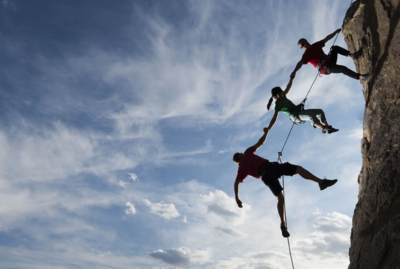The internet is a saturated landscape where attention can be hard to capture and even harder to keep. Social media thrives in this environment, where content and conversations are encouraged to be refined into the most engaging form possible. This makes it an excellent place to come into contact with similar businesses on the platform, where conversations and relationships can be formed.
That’s exactly what we’ll be covering with this article. How to use social media successfully to establish relations with similar businesses and creators on social media platforms. We’ll be covering the strategies and techniques you can use to specialise the content of your online personas to attract attention and make your work appealing to those business connections.
Objectives & KPIs
Before you start employing various successful techniques, you need to understand what your personal success looks like. Everyone wants to achieve something different with their social media campaigns. The first step is determining that end goal. Are you hoping to attract a particular audience and find other companies and creators of that same community? Are you simply using social media as a way to establish connections with other creators? Once you’ve figured that out, it’s time to move on to the smaller steps. It’s vital that you understand what your KPIs (key performance indicators) are. You need to create objectives for yourself.
Setting milestones
It’s essential to understand if you’re on the right trajectory by setting and following goals for your success. Is your end goal to establish a network with many other creators? Then your milestones should be based on how many you’ve created contact with. Or how good your relations with these creators are. Are you engaging in conversations with fellow creators and companies? Are you working on content and projects with them as partners? These are great ways to determine the health of your relations with other creators.
While not all KPIs will be as obvious as that, it’s essential to at least try to establish some visible milestones. Recognizable points that you can work towards to determine if what you’re doing is working or not. Throwing content out into the world of social media and hoping it sticks may work if you’re using the platform for fun, but if you’ve got goals you’re trying to reach, it will require a game plan.
Not all platforms are created equal
Another approach to take once you’ve figured out your end goal is taking a look at the platform you’re using. This will drastically change how you’ll try to approach success. Some sites, such as Twitter, make it extremely difficult to build traffic from nowhere. Content only gains traction by snowballing. Traffic breeds more traffic. This makes it vital to have connections beforehand in the hopes of getting some of those accounts’ content to flow your way. Or, you can always try to share in the success of a popular trending hashtag.
In contrast, sites like Instagram and other photo-sharing platforms, as well as video-sharing platforms like YouTube, tend to send traffic to users that post consistently. Large amounts of consistent-quality content at a regular rate is rewarded with greater exposure. This means you’ll need to create a good schedule to stay on top of these sites.
Another factor of your platform is the kind of audiences you’ll find using it. If you’re on an art-sharing site, you’re obviously going to find artists. No surprise there. However, if you look at platforms like Instagram and TikTok, what started off as audiences entirely consisting of teenagers and similar ages, has now turned into global audiences with varying communities. Those platforms have much broader audiences than many other types of platforms. Pinning down who exactly your content is reaching and setting your sights on the kind of audience you want to build is one of the most essential steps in all of this.
Finding your target audience
The next step is building your audience. Not just generating traffic, but pinpointing exactly the kind of users you want to attract. This will come down to many factors. The platform, the persona of your account and content, and what those audiences are interested in seeing. It’s also important to understand what stage of the purchase journey the users are at. Users from organic search or search ads can be differentiated based on the keywords they searched for. On social, this is trickier.
Since we’ve gone over the differences of platforms, let’s discuss account personas. This is essentially the image you build around your account. It might not be 100% reflective of your personality. In fact, you might have multiple people running the same account, but you still want to maintain that identifiable account persona. If your audience can grow fond or attached to that persona and image, you don’t want to spoil that relationship. Muddying that image by not nurturing and tailoring your content to it is a great way to miss an opportunity.
Content ideas & what to post
It is important to use all available information when deciding on your content. Is your intended audience more likely to be active at a certain time of day? Try to find out through analytics and statistics so you can adjust your posting schedule. Find out which content you post clicks the most with your audience, and let that influence (not dictate) what you post in the future.
Just remember not to sacrifice a recognizable image that you’ve worked hard to build up just to follow a trend. It may pay off in the short term, but doing so repeatedly can make your overall persona less identifiable in the long run.
Ads that really work
Forms of advertisement, either ones paid for to be displayed on the platform, or ones that you post in your own content, can also be a powerful tool. However, it’s one you need to be careful when using. Too many ads, especially ones that feel similar and uninspired, can make your account feel like a billboard rather than a real person. But ones that are well-planned and carefully consider what the intended audience would be interested in can do wonders for your brand. Plus, the best part is that these ads are likely to be shared with all sorts of similar creators and companies, not just your audience. This makes it a great way to get in contact with similar businesses on the platform.
About the Author
Rick has over two decades of experience with brands like Glasses Direct and Wellesley Group, helping businesses grow with bespoke digital solutions in marketing, SEO, web development, and strategy.















